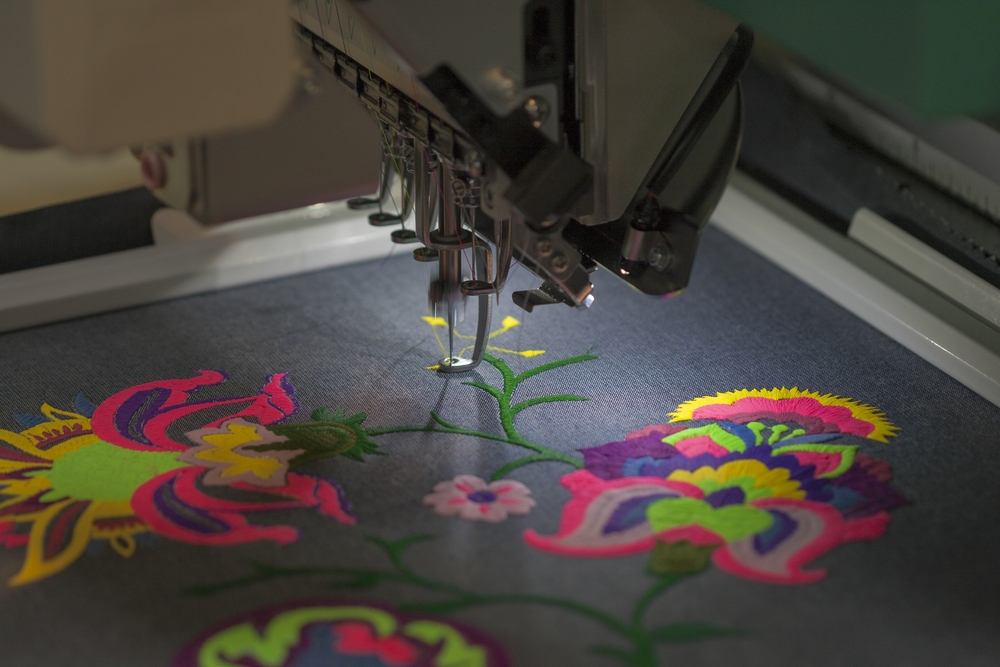Budget Friendly Digitizing for Embroidery: Precision and Information
Wiki Article
Mastering the Needlework Digitizing Process: Your Ultimate Overview
Needlework digitizing is a careful craft that requires accuracy and expertise to convert intricate designs right into digital formats for machine embroidery. As craftsmens start this trip to master the embroidery digitizing procedure, a thorough understanding of the basics sets the structure for quality. Nonetheless, beyond the simple expertise exists a realm of sophisticated software program, specialized devices, and nuanced techniques waiting to be explored. By diving right into the subtleties of digitizing, one can open a world of creative possibilities and elevate their embroidery jobs to new heights.
Comprehending Needlework Digitizing Essentials
Embroidery digitizing basics form the foundation upon which complex styles are equated right into machine-readable layouts for specific stitching. This initial step in the embroidery digitizing process is important for making certain that the last stitched item is a faithful representation of the original design. Comprehending needlework digitizing basics includes realizing key ideas such as stitch types, stitch direction, density, underlay, and pull compensation.Stitch types play an important function in identifying the aesthetic and textural result of the embroidered design. By selecting the appropriate stitch type, whether it be satin, fill, or running stitch, digitizers can accomplish the preferred impact and improve the overall quality of the needlework. In addition, sew instructions influences the flow and measurement of the style, while density identifies the spacing and protection of the stitches.
Additionally, padding sewing offers security to the layout by safeguarding the textile and protecting against distortion during the needlework procedure. Pull compensation is another essential factor to consider to counteract the all-natural tendency of textile to agreement when stitched. Understanding these needlework digitizing fundamentals is fundamental for producing professional-quality stitched products.
Selecting the Right Digitizing Software Program
Choosing the ideal digitizing software is a critical decision that significantly affects the performance and quality of the needlework digitizing procedure. Digitizing for Embroidery. When selecting the ideal digitizing software, it is necessary to take into consideration factors such as the complexity of styles you intend to develop, the user-friendliness of the software, the level of customer support used, and the compatibility with your needlework deviceThere are various digitizing software application alternatives available in the marketplace, varying from basic programs for novices to innovative software for expert digitizers. Some preferred choices consist of Wilcom EmbroideryStudio, Hatch Embroidery Software Application, and PulseID. These software use a variety of tools and features to help you produce complex layouts easily.
Prior to making a decision, it is recommended to check out the various check this site out software application options with cost-free trials or demonstrations to figure out which one best matches your needs. Additionally, reviewing testimonials and seeking recommendations from seasoned digitizers can give useful understandings into the staminas and weaknesses of each software (Digitizing for Embroidery). By very carefully examining your requirements and contrasting the functions of various digitizing software, you can make an enlightened selection that improves your needlework digitizing process
Digitizing Tools and Strategies

Optimizing Design Setup for Embroidery
Mastering the complexities of style setups is basic in attaining optimum lead to the embroidery digitizing process, building upon the foundation laid by comprehending digitizing devices and methods. When maximizing layout setups for embroidery, it is vital to think about aspects such as stitch kind, thickness, padding, pull compensation, and registration. Stitch type selection impacts the total appearance and feel of the style, with options like satin, fill, and running stitches offering various structures and impacts. Density describes the spacing and thickness of stitches, affecting the layout's protection and sturdiness. Proper padding sewing provides security and protects against textile distortion, particularly for complex designs or on elastic materials. Pull settlement readjusts for material stretch during sewing, making certain precise design duplication. Registration setups line up different elements of the style accurately, keeping general design honesty. By fine-tuning these design setups, embroiderers can improve the quality and precision of their embroidered this hyperlink developments.
Troubleshooting Common Digitizing Issues
When experiencing usual digitizing problems throughout the embroidery process, it is important to comprehend the origin and apply effective options without delay. One common issue is stitch thickness concerns, where stitches might be also thick, over here creating the fabric to tighten, or as well sporadic, bring about gaps in the design. Changing the stitch thickness settings in the digitizing software program can help fix this problem.An additional frequent challenge is thread breaks during the needlework procedure. This can take place due to various factors such as incorrect tension settings, dull needles, or utilizing low-quality string. Making certain correct upkeep of the needlework machine, including regular needle changes and tension adjustments, can reduce the incident of thread breaks.
Additionally, style enrollment mistakes can lead to misaligned aspects within the needlework style. Inspecting the style positioning in the digitizing software application and making needed modifications before stitching can help in avoiding this concern. By resolving these usual digitizing concerns without delay and properly, you can make certain a smoother needlework procedure and top notch completed products.
Conclusion
In conclusion, mastering the needlework digitizing procedure needs a strong understanding of the fundamentals, the best choice of software, and expertise of tools and techniques. Optimizing layout setups and fixing common digitizing concerns are vital steps in ensuring high-grade needlework results. By following these actions carefully, one can accomplish accuracy and effectiveness in the digitizing process.Report this wiki page